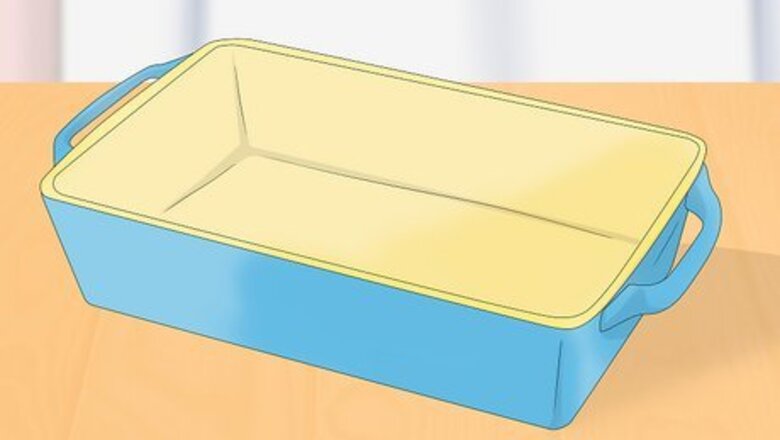
views
X
Research source
To properly bathe your Russian tortoise, gather the appropriate supplies, soak and gently wash your tortoise, and clean up carefully when you are done.
Gathering Your Materials
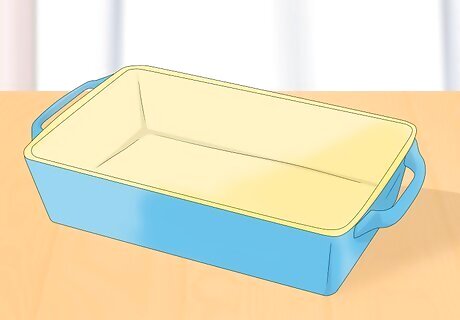
Get a shallow pan or tray large enough to accommodate your tortoise. Ideally, the container you choose should be made of porcelain or opaque plastic, so that your tortoise will not be tempted to climb out. A clean, shallow kitty litter pan or a large porcelain baking dish may be ideal for this purpose. Whatever you choose to use as a tub, only use it for bathing the tortoise. Once it's used to bathe the tortoise, it's no longer suitable for food preparation or other such purposes.
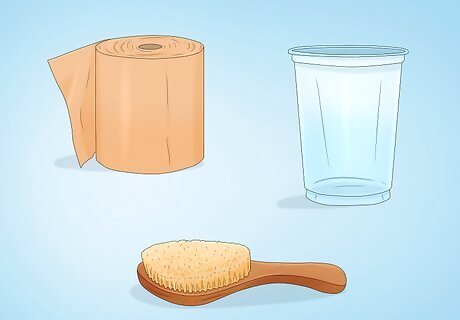
Gather your other cleaning supplies. You will need another container, like a cup or small watering can, for rinsing the tortoise. You should also have a soft-bristle toothbrush or nail brush and a roll of paper towels on hand.
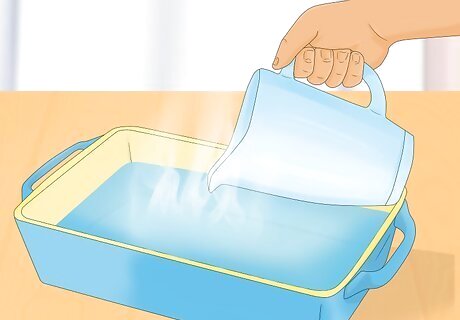
Put a little warm water in the bathing container. Put just enough clean, warm (not hot) water into the bottom of the pan that the water level will reach the bottom of your tortoise’s shell. Do not add any soaps, detergents, or other products to the water.
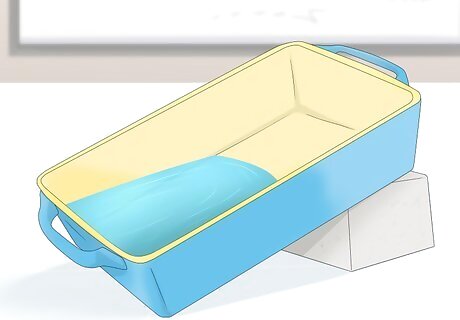
Place a short item under the tub to lift it slightly. Use a book or a similarly-sized item to slightly tilt the tub. This will create a deep end and a shallow end so that your tortoise can safely sit in the tub. Place the tortoise's head in the shallow end, with its rear in the deep end.
Soaking and Scrubbing Your Tortoise
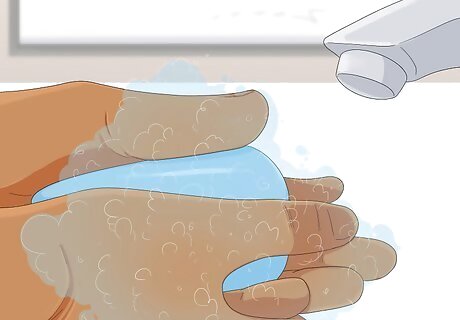
Wash your hands with soap and water. Protect your tortoise by making sure your hands are clean before handling the tortoise and the bathing supplies.
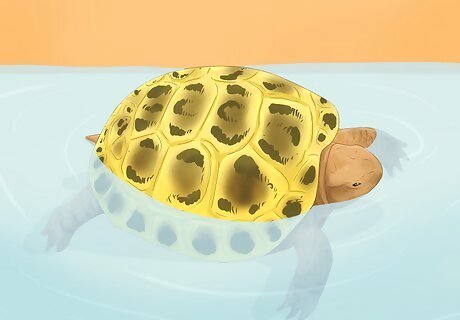
Place your tortoise in the bathing container. Gently lower the tortoise into the water. Allow your tortoise to take a few minutes to get used to being in the water. Do not hold the tortoise down forcefully.
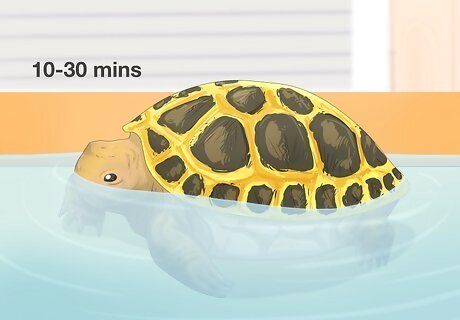
Allow your tortoise to soak for 10-30 minutes. Soaking in warm water will not only hydrate your tortoise’s skin, but will also encourage the tortoise to drink and eliminate waste. The water must never be allowed to go cold, as the tortoise depends on heat from the environment to function. It's best to scoop out the water periodically and add in more warm water. Do not leave your tortoise unattended in the water. A tortoise can easily become overturned and drown, even in a small amount of water.
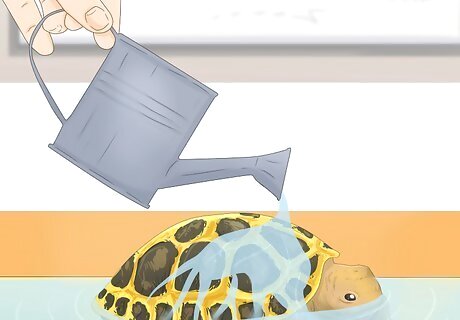
Pour warm water over your tortoise. Use a separate container to gently rinse your tortoise’s shell, head, and limbs. This can help rinse away dirt and hydrate the parts of the tortoise that are not submerged in the bathing pan. Allow the water to trickle through your fingers, or use a watering can to create a gentle shower.
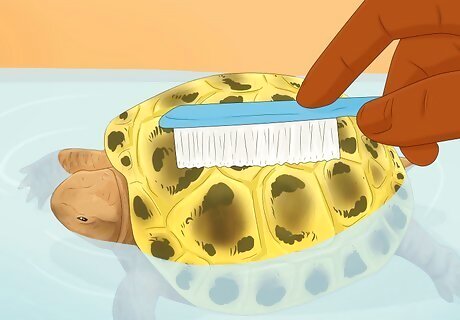
Use a soft-bristled brush to gently scrub the shell. Once you have softened any stubborn dirt by sprinkling the shell with water, scrub off any remaining dirt with a soft brush. Pour a little more water over the shell to rinse away any dirt you dislodge with the brush. Be sure to give special attention to the spaces between the scutes (plate-like sections of the shell) and the underside of the carapace (upper shell), especially around the limbs, tail, and head. Dirt tends to build up in these areas. Gently scrub the plastron (lower shell) as well as the upper shell.
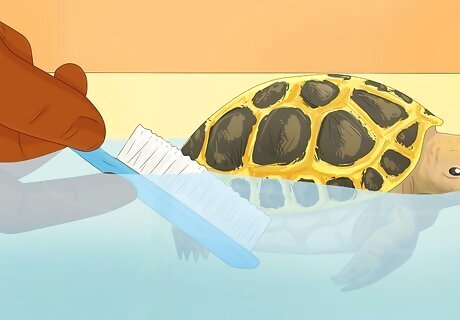
Brush and rinse the neck, limbs, and tail. Be extra gentle while scrubbing these parts of the tortoise, especially in areas that are not densely covered in scales.
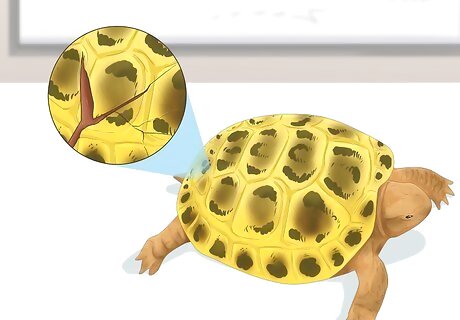
Take the opportunity to check for injuries or other problems. Examine your tortoise for injuries, shell damage, signs of mites, or signs of Stomatitis, a common mouth infection in tortoises. If you discover any signs of disease or injury, take your tortoise to the vet. Look for red spots or cracks around the tortoise’s beak and mouth. These may be signs of stomatitis or mouth rot. Examine the shell for cracks, discolorations, or lesions. Check the skin and scales for wounds or blisters. Check the folds in the tortoise’s skin around the head and limbs for mites, which will look like small red or black dots. These can be gently brushed off with your soft-bristle brush and rinsed away with water.
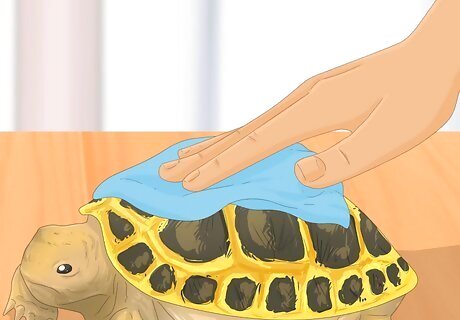
Dry the tortoise with a paper towel. When you are done bathing your tortoise, gently and thoroughly dry the tortoise’s head, limbs and shell with a paper towel before returning it to its habitat. Make sure the tortoise is thoroughly dry, to prevent potential issues with shell rot caused by excessive humidity. Dispose of any paper towels immediately in a closed garbage container in order to prevent the spread of disease or parasites.
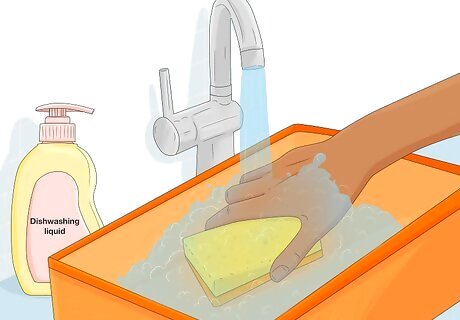
Dispose of the bath water and clean the container. You may wish to pour the used bath water into your toilet for sanitary reasons. Wash the bath container with mild detergent and hot water, and rinse it thoroughly.
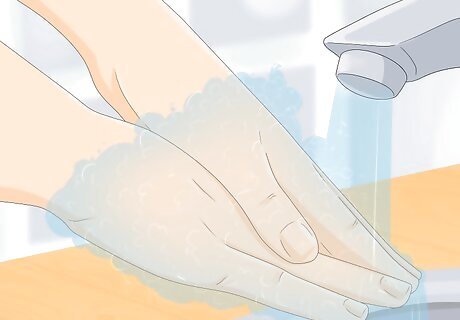
Wash your hands with soap and warm water. Tortoises can spread salmonella and other diseases. Always wash your hands thoroughly after bathing or handling your tortoise.















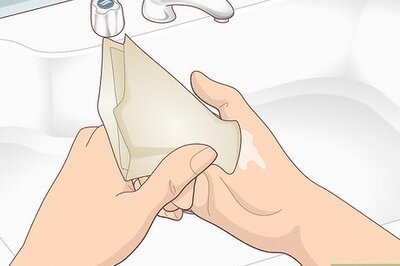



Comments
0 comment